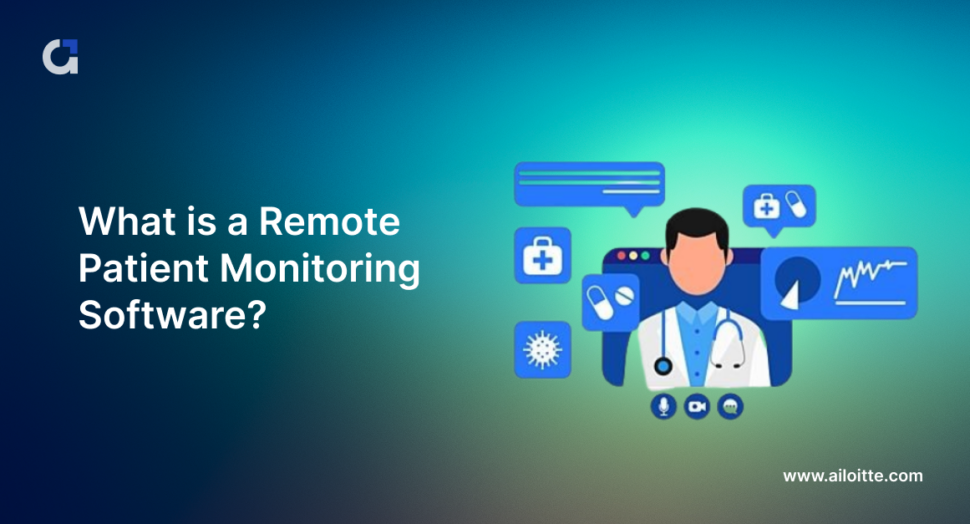Leading Remote Patient Monitoring Platform: Streamline Health Care Procedures
Leading Remote Patient Monitoring Platform: Streamline Health Care Procedures
Blog Article
The Future of Medical Care: Remote Client Keeping An Eye On Simplified
As medical care proceeds to progress, one area that holds tremendous guarantee is remote patient monitoring. With a focus on boosting individual outcomes and improving healthcare shipment, remote monitoring is positioned to reinvent the sector.
Benefits of Remote Client Surveillance
Remote person tracking offers a wide range of advantages for both healthcare companies and people alike. In addition, remote person surveillance enhances the overall top quality of care by giving a much more holistic and extensive view of clients' health and wellness status beyond standard in-person check outs.
In addition, remote individual tracking can bring about better patient end results and satisfaction. Individuals can enjoy the benefit of getting treatment in the comfort of their own homes while still understanding that their health is being carefully checked. This can result in enhanced patient involvement and adherence to treatment strategies, inevitably causing much better health outcomes. Moreover, remote tracking can reduce the need for constant healthcare facility visits, reducing health care costs for both people and providers. On the whole, the advantages of remote individual monitoring are clear, making it a useful device in modern-day medical care shipment.
Modern Technology Driving Remote Tracking
In the world of contemporary health care, technical improvements play a pivotal function in driving the advancement and effectiveness of remote person surveillance. The integration of innovative modern technologies such as wearable devices, mobile applications, and cloud-based systems has actually revolutionized the means medical care companies remotely take care of and monitor person wellness - software for remote patient monitoring. These technologies make it possible for constant real-time surveillance of crucial signs, drug adherence, and various other important wellness data, permitting timely treatments and personalized care plans
One trick innovation driving remote tracking is the Web of Points (IoT), which allows seamless connectivity between clinical devices and medical care systems. IoT devices such as smartwatches and cordless sensors send and gather client data to central platforms, facilitating remote tracking from anywhere in the globe. Expert system (AI) and artificial intelligence algorithms further improve remote monitoring by examining huge quantities of client data to detect patterns, predict health patterns, and alert medical care carriers to possible problems.
Effect On Healthcare Delivery
With the integration of sophisticated innovations driving remote patient tracking, the influence on health care delivery is coming to be transformative and significantly extensive. Remote individual monitoring permits doctor to provide more positive and customized care to clients, leading to boosted wellness end results and decreased hospital admissions. By from another location tracking essential signs, symptoms, and medication adherence, health care professionals can intervene early, avoiding difficulties and boosting the total high quality of care.
Moreover, remote monitoring boosts access to health care solutions, specifically for individuals in underserved or rural areas. Clients can obtain continuous tracking and support from their homes, getting rid of the need for frequent in-person check outs. This not only conserves time and lowers prices for both people and health care centers however also lessens the risk of direct exposure to infectious diseases, a critical consideration in the current medical care landscape.
Additionally, remote patient tracking allows doctor to far better prioritize and designate resources care based upon real-time information. By recognizing risky individuals and stepping in immediately, medical care shipment becomes much more efficient and effective, ultimately bring about a much more lasting and patient-centered medical care system.
Improving Client End Results

Additionally, RPM allows for aggressive management of chronic conditions, reducing the probability of acute worsenings and hospital readmissions. Individuals profit from increased benefit and comfort, as they can get treatment in their own homes while remaining connected to their doctor. This continuous monitoring not only improves patient complete satisfaction however likewise fosters a feeling of empowerment and interaction in their own health monitoring.
Future Trends in Remote Surveillance
Embracing advanced modern technologies in remote client surveillance is shaping the future landscape of healthcare delivery. The future trends in remote monitoring are expected to revolutionize the way medical care is supplied, making it extra patient-centric and reliable. One significant pattern is the enhanced use of wearable devices and sensing units to collect real-time information, allowing health care suppliers to keep track of patients continuously without the requirement for regular in-person visits. These devices can track essential indicators, drug adherence, and activity degrees, supplying an extensive sight of the individual's wellness standing.

Furthermore, telehealth systems are becoming a lot more sophisticated, permitting virtual examinations, remote medical diagnosis, and remote person checking all in one integrated system (remote patient monitoring platform). This alternative method to remote monitoring is streamlining healthcare distribution, enhancing client complete satisfaction, and ultimately, visit the site enhancing total high quality of care
Conclusion
To conclude, remote patient tracking uses countless benefits in medical care distribution, driven by improvements in modern technology. It has the potential to boost individual results and transform the way healthcare is supplied. Future trends in remote monitoring will remain to shape the landscape of medical care, offering chances for even more reliable and personalized person treatment.
Remote individual surveillance provides a wide variety of benefits for both health care companies and clients alike. Additionally, remote individual tracking boosts the total top quality of care by supplying an extra all natural and thorough view of individuals' health and wellness standing beyond typical in-person sees.
Furthermore, remote individual surveillance can lead to enhanced client outcomes and satisfaction. Remote person tracking permits healthcare carriers to use even more proactive and customized care to clients, leading to boosted wellness end results and reduced hospital admissions. Remote patient tracking (RPM) plays a considerable role in boosting individual end results by providing continual, real-time information that enables medical care service providers to interfere promptly and readjust therapy strategies as needed.
Report this page